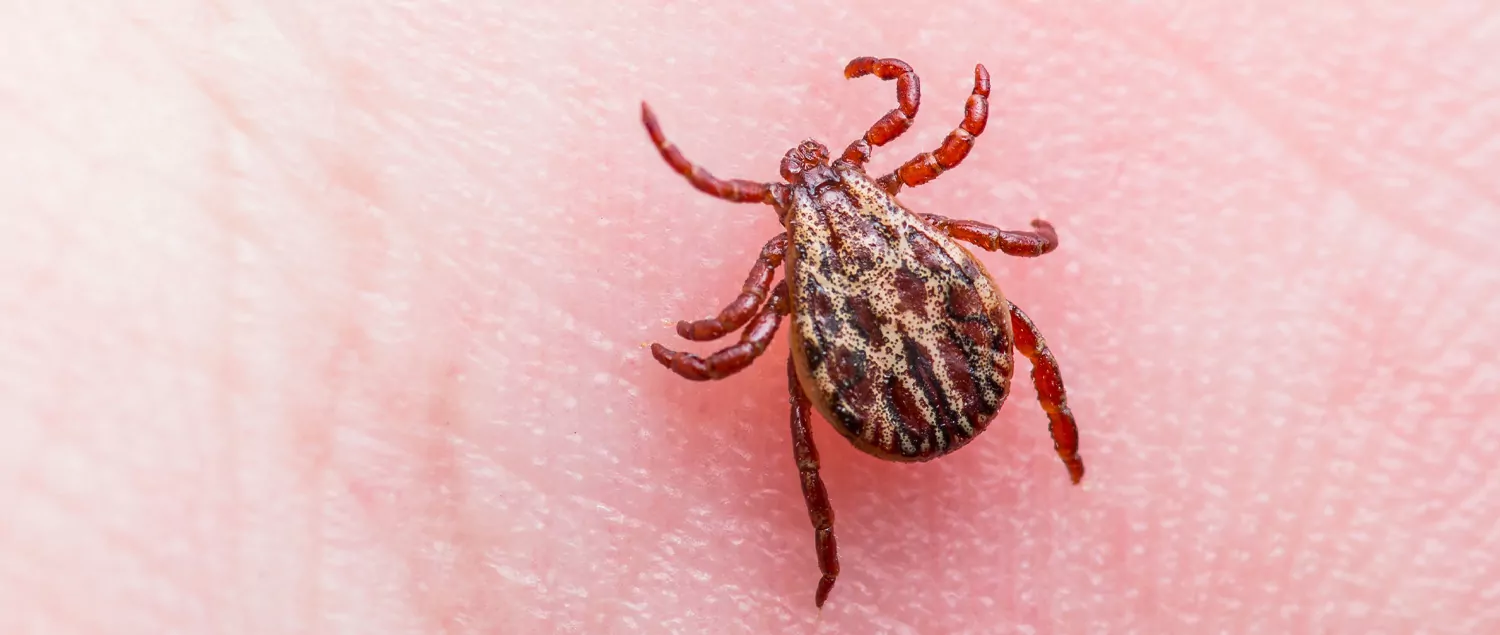What is Lyme Disease?
Lyme disease, also called Borreliosis or Bannwart’s disease, is an infectious disease caused by bacteria. In humans, the disease is transmitted by ticks carrying the infecting bacteria Borrelia burgdorferi andBorrelia mayonii. The risk of contracting Lyme disease can be increased by spending time in bushy, grassy and wooded areas where ticks are especially common. Taking the necessary precautions when in these areas can reduce the risk of lyme disease.
What are the Symptoms of Lyme Disease?
Symptoms of Lyme disease can be confused with other health problems. For example, tick bites may not initially be suspected because they resemble mosquito bites. Symptoms appear in three stages depending on the length of time the tick remains on the body. These stages are early, early disseminated and late disseminated. The symptoms that occur during these stages depend on the severity and development of the infection.
What are the Stages of Lyme Disease?
Symptoms of Lyme disease vary from person to person. Symptoms appear gradually. Lyme disease is therefore made up of stages. These phases are as follows:
- Early Stage (Stage 1): Symptoms that appear within 3 to 30 days. There are limited symptoms in the early stage of the disease. Some people may not have an early stage. The rash, called erythema migraine, is a common first symptom of Lyme disease. The rash is usually slightly red in a circle at the site of the tick bite. This area is often tingly and hot to the touch. Rarely, pain and itching may be felt in these areas. Other symptoms that appear at an early stage include:
- Fire,
- Fatigue
- Headache
- Joint stiffness,
- Muscle aches
- Swollen lymph nodes.
- Early disseminated stage (Stage 2): During this period, Lyme disease is even more serious. Symptoms that cover the symptoms of the early stage are observed. Symptoms appear between 3 and 10 weeks. The symptoms that occur in the early disseminated stage are as follows:
- Muscle weakness on one or both sides of the face (facial paralysis),
- Immune system reactions that cause irregular heartbeat,
- Rashes on more than one part of the body,
- Swelling of the eye or eyelid tissues,
- Numbness, pain, weakness in the hands and feet,
- Problems with vision,
- Pain in the back and legs,
- Stiffness and pain in the neck.
- Late Disseminated Stage (Stage 3): In this stage, symptoms appear weeks, months or years later. Sometimes it is also considered a stage of symptom relapse. It is the most advanced stage of the disease. This stage is sometimes referred to as chronic Lyme disease. In this stage, in addition to the symptoms of the early and early disseminated stage, the following symptoms occur:
- Short-term memory loss,
- Sleep problems
- Arthritis (swelling in the joints),
- Skin discoloration in the knees, feet, hands and elbows,
- Neuropathy
- Polyneuropathy (damage to skin, muscle and organ nerves).
What are the Complications of Lyme Disease?
Lyme disease causes different complications in humans if left untreated. These complications occur due to incomplete treatment or recurrence of the disease. Complications that occur in Lyme disease include
- Post Lyme Disease Syndrome (Chronic Lyme Disease): This is a condition where symptoms persist despite treatment. During this phase, the cells that fight the bacteria are attacked as a result of abnormal activity of the immune system. This condition may improve after a while, but it may take a long time for the person to feel well.
- Neurological Lyme Disease: Occurs when Lyme bacteria affect the central and peripheral nerves. If the cranial nerves are affected, facial paralysis occurs, and if the peripheral nerves are affected, symptoms affecting the limbs occur. If the central nervous system is affected, meningitis (inflammation of the meninges) causes symptoms such as fever, headache and neck stiffness.
- Lyme Carditis Lyme bacteria enter the tissues of the heart and affect its functioning. If Lyme carditis occurs at any stage of Lyme disease, it causes fainting, shortness of breath, chest pain and heart palpitations.
- Lyme Arthritis: Occurs when bacteria enter the joint tissue. The most prominent feature is abnormal swelling of the joints. However, the joint areas feel warm and painful to the touch. Left untreated, it causes permanent damage to the joints. Lyme arthritis occurs especially as a symptom of the late disseminated stage.

How Does Lyme Disease Happen?
The disease is caused by a bite from a tick carrying Borrelia bacteria. Ticks attach to skin areas such as the groin, armpits, scalp, under the chest and below the knees. Once they find a host, they attach and pierce the skin to suck blood. To do this, he injects saliva with anesthetic properties into the body. In this way, the tick can remain attached to the body for a long time without being noticed. The severity of infection is related to the length of time the tick remains on the skin. If the tick has been attached to the skin for less than 72 hours, the risk of developing Lyme disease is low.
What Causes Lyme Disease?
The main cause of Lyme disease is the bite of a tick infected with the bacteria Borrelia burgdorferi and B. mayoneni. The other way Lyme disease is transmitted is through blood transfusions. Lyme disease bacteria can live in the blood and can be transferred to another person during a transplant. People who have been treated with antibiotics for Lyme disease should therefore not donate blood. Other Lyme disease transmission routes include
- Pets such as cats and dogs can bring infected ticks into your home and infect you.
- Hunting game animals can make it easier for infected ticks to reach the body. However, wearing clothing from hunted animals increases the risk.
- Lyme disease can be transmitted from mother to fetus. Lyme disease during pregnancy should therefore be treated as soon as possible.
- Outdoor activities that increase tick exposure, such as gardening, hunting, camping and hiking, can increase the risk of contracting the disease.
How is Lyme Disease Diagnosed?
Lyme disease can be difficult to diagnose because its symptoms are similar to the flu. However, it takes several weeks after the onset of the disease before antibodies can be detected by blood tests. The doctor therefore conducts a thorough physical examination to diagnose Lyme disease. In addition, blood tests are used to detect symptoms. The patient can also receive a direct diagnosis if they live in a high-risk area for ticks.
Lyme Disease Treatment
Early treatment of Lyme disease and appropriate antibiotic therapy is important. Sometimes Lyme disease can reappear after treatment. This is called post Lyme disease syndrome. To prevent the development of the syndrome, treatment should be carried out at the appropriate time and with the appropriate method. The duration of treatment depends on the severity of the infection and the length of time the tick remains on the body. The antibiotics to be used in the treatment are prescribed by the doctor according to the symptoms observed in the patient. Antibiotics can be used in Lyme disease for the following purposes:
- The standard treatment is antibiotics taken in pill form,
- Intravenous (IV) antibiotics if Lyme disease causes resistant arthritis, disease affecting the nervous system or heart,
- Antibiotics prescribed to the patient as preventive treatment, i.e. prophylaxis, to treat symptoms and serious conditions.
How to Prevent Lyme Disease?
The best way to prevent Lyme disease is to stay away from tick-populated areas. If you live in areas where ticks are dense, the following can be done to prevent Lyme disease:
- Tick repellents can be used.
- Light-colored clothing should be worn to make it easier to see ticks on the body.
- Closed shoes and boots should be worn instead of open shoes such as slippers and sandals.
- Long-sleeved clothing that can be tucked into pants should be worn.
- Outdoor activities should be done with the trouser legs tucked into socks.
- Shower as soon as possible after outdoor activities. This removes ticks that are loosely attached to the body. Check the body for ticks with a mirror. Body parts where ticks can settle should be checked, especially the scalp, belly button, groin, behind the knees, under the chest, armpits and ears.
- Outdoor clothing should be checked before washing and placed in the tumble dryer on a hot setting. In this way, ticks are eliminated.
- If a tick is detected on the body, it should be removed with the help of tweezers in such a way that no part of it remains on the skin. If the tick is very embedded under the skin, you should consult a doctor. If the tick is successfully removed from the skin, it should be destroyed with alcohol.
- Pets should be checked regularly for ticks. However, in consultation with the veterinarian, a tick repellent suitable for the pet should be used.
Is Lyme Disease Fatal?
Lyme disease is a curable infectious disease. In some cases it can lead to long-lasting effects. Untreated Lyme disease can therefore lead to serious health problems. In rare cases, it can also be fatal. Lyme carditis in particular is among the deadliest complications.





